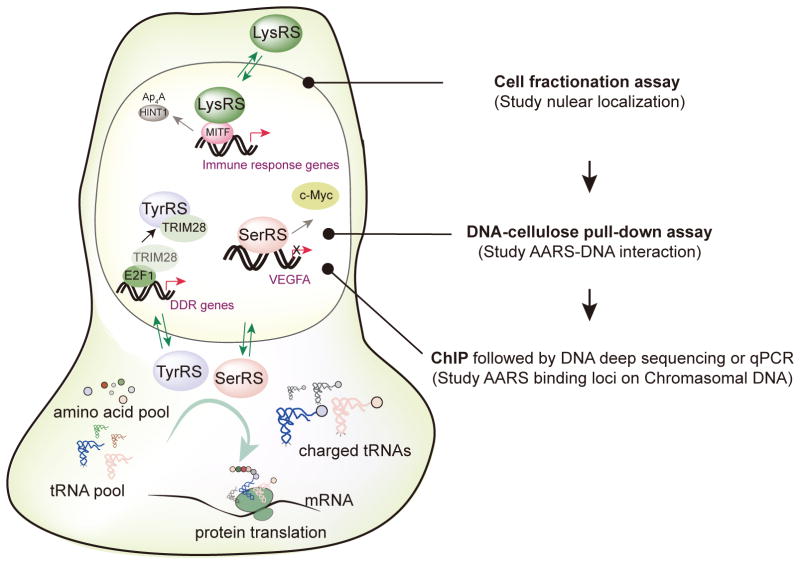Fig. 1.
Three key methods for studying the transcriptional regulatory functions of AARSs in cell nuclei. In addition to their cytoplasmic functions of charging tRNAs with cognate amino acids for ribosomal protein synthesis, many AARS family members in higher eukaryotes can enter nuclei, where they modulates the expression of genes involved in a broad range of biological processes. Three examples are illustrated: Nuclear TyrRS can compete with transcriptional factor E2F1 for binding to transcriptional repressor TRIM28 and activate transcription of DNA damage response (DDR) genes. Nuclear LysRS can activate transcriptional factor MITF during an allergic response by producing Ap4A to remove HINT1 from inhibiting MITF. SerRS can directly bind onto genomic DNA and repress the expression of genes involved in angiogenesis such as VEGFA. The the nuclear import of an AARS can be determined by cell fractionation assay. Once the nuclear localization is confirmed, the AARS can be further studied by DNA-cellulose pull-down assay in vitro and ChIP analysis in cells to understand its potential function related to gene transcription.

